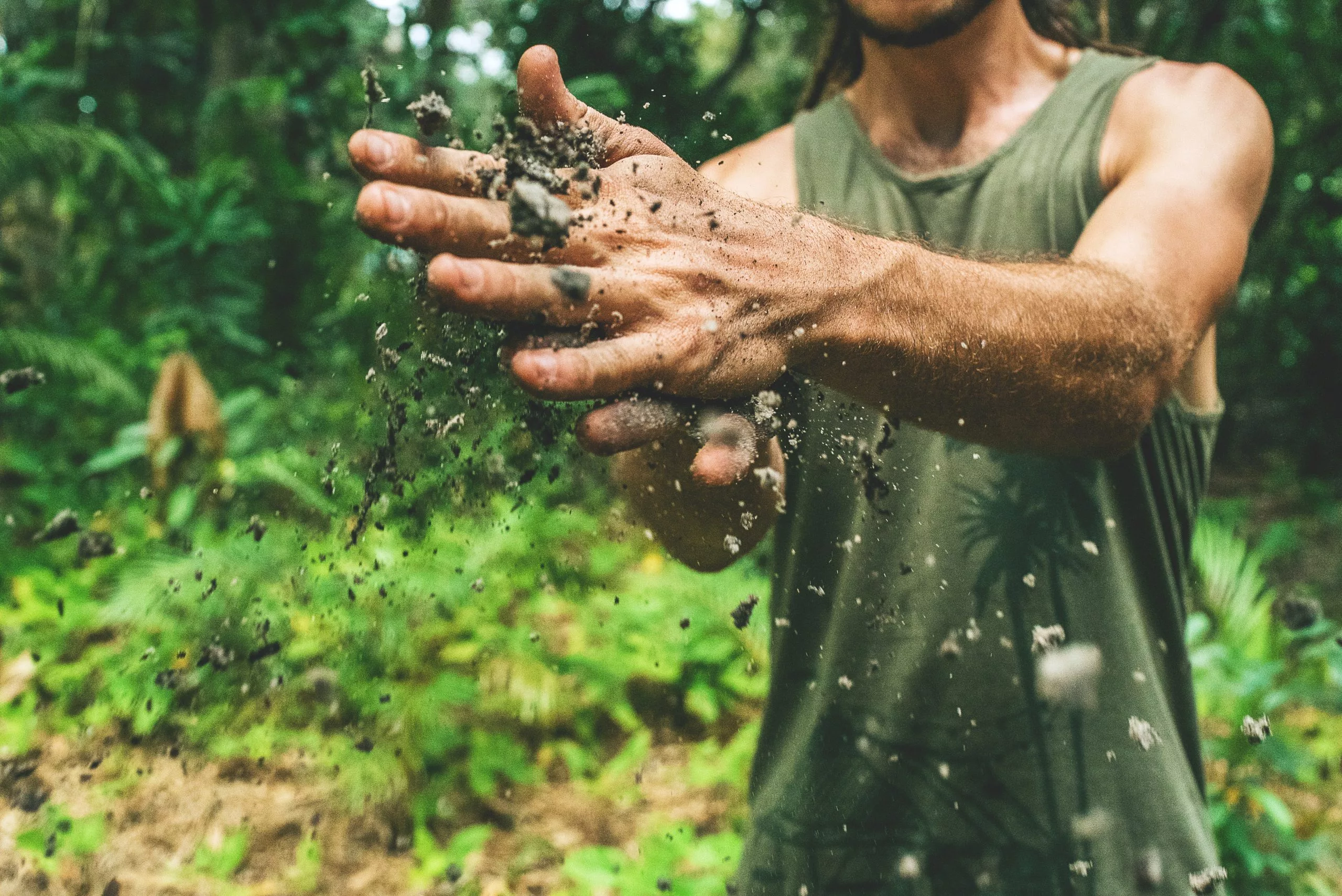Investor and carbon farmer Sallie Calhoun is on a mission: to change our relationship to the earth beneath our feet. After selling her tech company in 2001, she quickly became the proud owner of 7,600 acres of California grassland called Paicines Ranch — plus enough money to leverage some serious change. Now, along with impact investing guru Esther Park, she co-manages a soil-health portfolio called Cienega Capital with $20 million deployed to-date, and has recently co-founded the No Regrets Initiative to build momentum toward climate-beneficial communities. Why is Calhoun so committed to turning dollars into dirt? We sat down with her to learn more and find out.
In a closed environment (like our planet), matter is neither created nor destroyed. So as atmospheric carbon steadily increases (in December 2017, it passed 410 parts per million for the first time in millions of years), carbon levels must steadily decrease somewhere else — and that somewhere else is our global soils. To reverse climate change, carbon in the atmosphere must return to the soil, a process that green, photosynthesizing plants are already perfectly designed to execute.
This single statistic alone has deeply motivated Calhoun, and it may do the same for you: If we can increase soil carbon storage levels by 2 percent globally, we’ll remove all excess atmospheric carbon in 10 years. Let that sink in for a second. We could completely reverse our global warming trajectory by adopting nature-based, regenerative farming techniques that sequester carbon from the air into the soil.
Additionally, regenerative practices can put some much-needed nutrition back into our food. Data suggests we’d have to consume eight oranges today to get the same amount of Vitamin A our grandparents got from one, for example. It could also help rebuild plant and animal diversity, refill aquifers and water tables, and drastically reduce the number of natural disasters which so often afflict the world’s most impoverished areas.
Regenerative soil is soil that is alive: it is carbon-rich and host to myriad fungal and bacterial communities that collaborate with healthy plant roots in the sequestration of atmospheric carbon. These collaborators are constantly trading liquid carbon (exuded by plant roots during photosynthesis) for water molecules sourced from deep soils. This rich, pungent soil can be spotted with the naked eye, Calhoun explains. “Are plant root bundles long, thick, and tangled? Does soil stick to the roots? Is it warm, moist, and alive? Or are the roots sparse and dry — and the soil even sparser?”
Regenerative soil can be created by a number of ecosystem factors, including:
- Increased flora diversity: The more varied plants an ecosystem has, the healthier the soil. More than eight plants growing together seems to be the magic number.
- More perennial plants: Perennials go dormant instead of dying during winter, creating large, complex root systems compounded year after year.
- The help of ruminant animals: Cows and sheep can encourage soil health through natural soil disturbance, waste and grazing. Grasses that have been grazed will release roots underground to stay balanced, and these roots feed soil microbes that help absorb carbon.
These factors work together to exponentially increase green plant life, photosynthesis, underground root systems and water retention, ultimately pulling more and more carbon from the air back into the soil each seasonal cycle.
Farming and ranching techniques that sequester carbon are often synonymous with letting nature work organically — which saves time, money, and effort while producing better results. For example, if you let a wild field grow naturally with minimal interference, you’ll see flora and fauna diversity and native perennial grasses sprout up in no time. This can happen on unplanted land or as a ground cover for planted crops. The less barren soil we have, the better.
In fact, what soil scientists and carbon farmers are now learning about photosynthesis, biodiversity, and underground ecosystems supports a “new” approach to growing food that is really just old wisdom resurfaced. No more tilling, mono-cropping, chemical fertilizers, or other industrial farming elements that don’t actually exist in the natural world.
“The thing that’s so fascinating,” explains Calhoun, “is if we set out as humans to devise a system of agriculture that destroyed soil, I’m not sure we could do any better . You have to go and make these big factories, you have to make these giant machines to tear up the fields, and you have to make all this stuff to dump over the fields. We’ve worked really, really hard to devise the perfect way to kill all of these things. If we stopped working so hard, the earth would pretty much instantly get better.”
“There’s virtually no capital going into actual food production,” Calhoun laments. “Investment capital is all going into juice bars and other food companies that can be acquired by bigger companies. This is because there is a very low margin in food production. Farmers have basically been squashed to the point that they barely stay in business with government subsidy. There’s no money to be made there. What we’re interested in is how we can finance climate-beneficial farming enterprises so that the people on the ground who are actually doing the work can make some money.”
The funding vacuum Calhoun described exists for several reasons, which are all interconnected in a large, complex system.
First, soil health is still an emergent field, so it is considered a high-risk investment. Ironically, Calhoun argues that well-managed farmland is one of the least risky investments one can make. “We have this idiotic idea that money put in Wall Street is not risky, and that lending to the farmer down the road is terribly risky. This is something that Wall Street has sold us to get our money,” she explains. “We in the Cienega community think it’s far less risky to invest in different people doing different projects in different geographies. Our money is ultimately in one big financial system that is interconnected, and that system is connected to the environment in ways that many people still don’t acknowledge.”
Second, the impact of soil-health initiatives is difficult to measure. “We have thought about it. We’ve tried. We’ve abandoned the thing,” Calhoun says bluntly. “This is a big, complicated, emergent system, and we embrace the fact that a lot of the times we make an investment, we have no idea what the return will be.”
She describes a recent investment as an example. Like many in his field, a young Arkansas farmer was running short on funds, and his farm was about to be sold. “I bought the farm. I leased it to him. We agreed if he could get a loan in three years, he could buy it for what I paid for it, and he paid us 5 percent as rent,” she says. That young farmer leveraged Calhoun’s investment into over a million dollars in capital from nonprofit donors, and he now runs a successful meat company that aggregates from 16 local producers. “I thought I was buying a farm to help a guy, and what happened is that now he’s got this amazing enterprise going,” Calhoun shares. “We fully embraced the idea although we’re not sure what all the returns are going to be, and we still struggle with quantifying the ones we know. For us, it’s about people and what’s happening on the land. It’s not like if you can’t measure it, it’s not important. I think in the same way we’ve become obsessed with one kind of financial return, we’ve become obsessed with reducing things to numbers and indices and not really understanding what’s going on .”
Finally, the climate-beneficial soil community may not be mature enough to absorb all deployable capital. “There are all these small nonprofits working on this,” Calhoun observes. “They can’t absorb million-dollar grants in one year. How do we all work together to help this system change faster? There are tons of opportunities here.”
Once you understand the benefits of regenerative farming, spread the word with your agricultural suppliers. Every time you source a product, look for one that is made from materials grown in carbon-rich soil.
Carbon farming epitomizes win-win business. This is quite literally the future of conscious supply chain management: If we don’t demand climate-beneficial supply chains now, there won’t be a future. By using consumer leverage to rebuild soil health (remember, just a 2 percent increase in soil carbon storage levels globally will remove all excess atmospheric carbon in 10 years), every other link on the chain becomes healthier — our food, our water, our air, our flora and fauna, our communities, our investments, and the single most valuable resource mother nature bestowed upon us: our planet.
Fibershed, an online textile-sourcing community for climate-beneficial cottons and wools, is one example of an active supply chain. The sheep and cotton plants live on and in soil that actively sequesters carbon, so every time you purchase goods from a Fibershed member, you are literally moving a few more atmospheric carbon particles into the soil.
When asked whether she’d rather leave $20 million or 20 inches of healthy soil to her children, Calhoun answers without hesitation. “I can tell you that I’ve made that decision, because every day I spend money to sequester carbon all over the world. I know I’m obsessed, but I believe this is the most important work to do in the world right now. And I believe, actually, it would be that way even without climate change. There is no contest on that question.”
Her advice to the next generation of conscious business leaders? She asks us to become an ecological civilization. She asks us to understand ourselves as part of the whole rather than the controller of the whole. “We are just one part of this amazing, fantastic Mother Earth, and we have to reintegrate ourselves into that. If we do that, I think we can all live from a place of abundance, not scarcity.”





